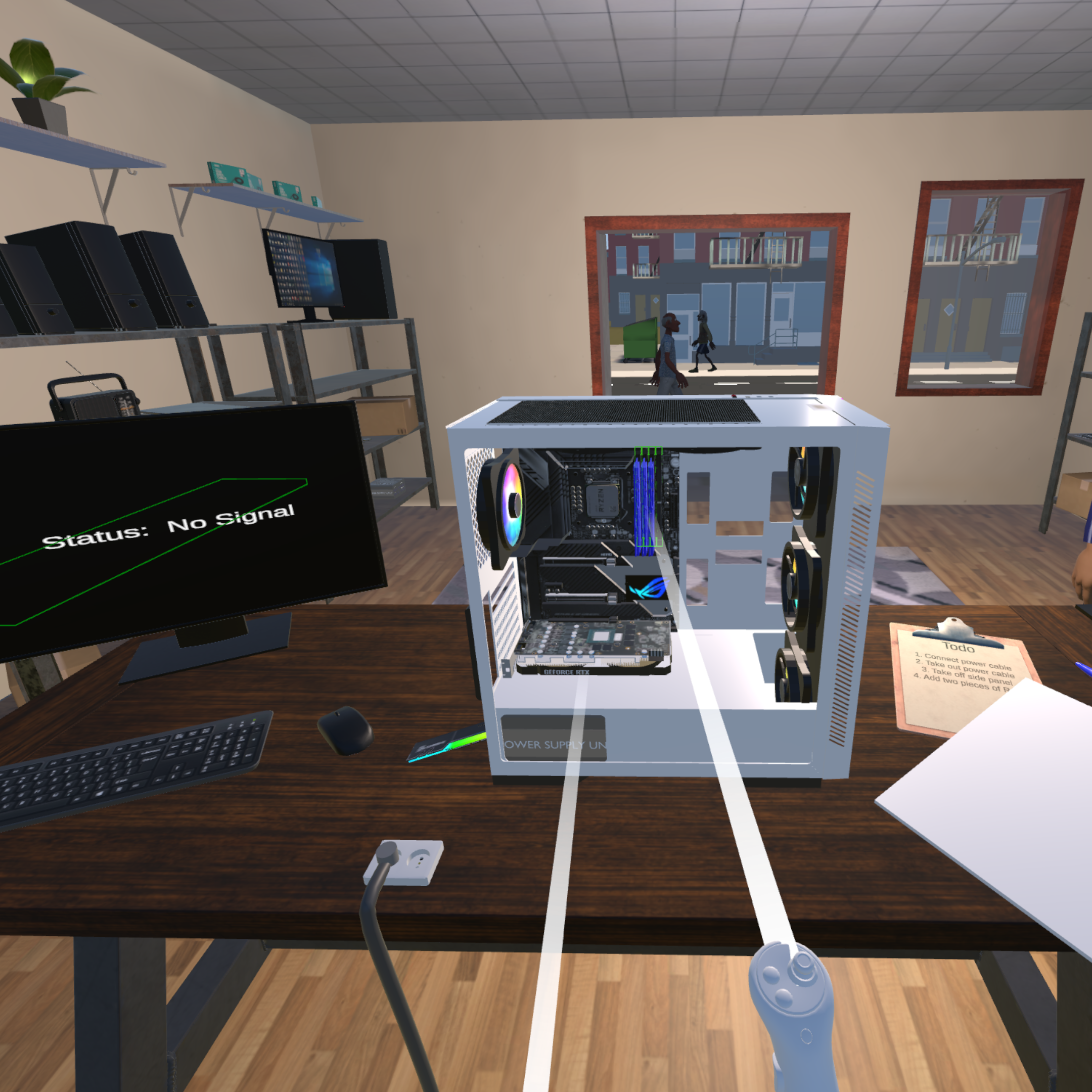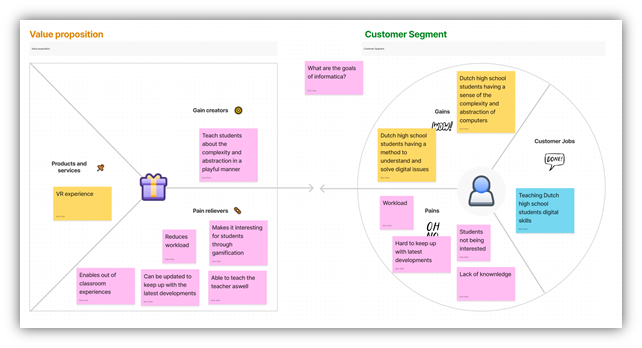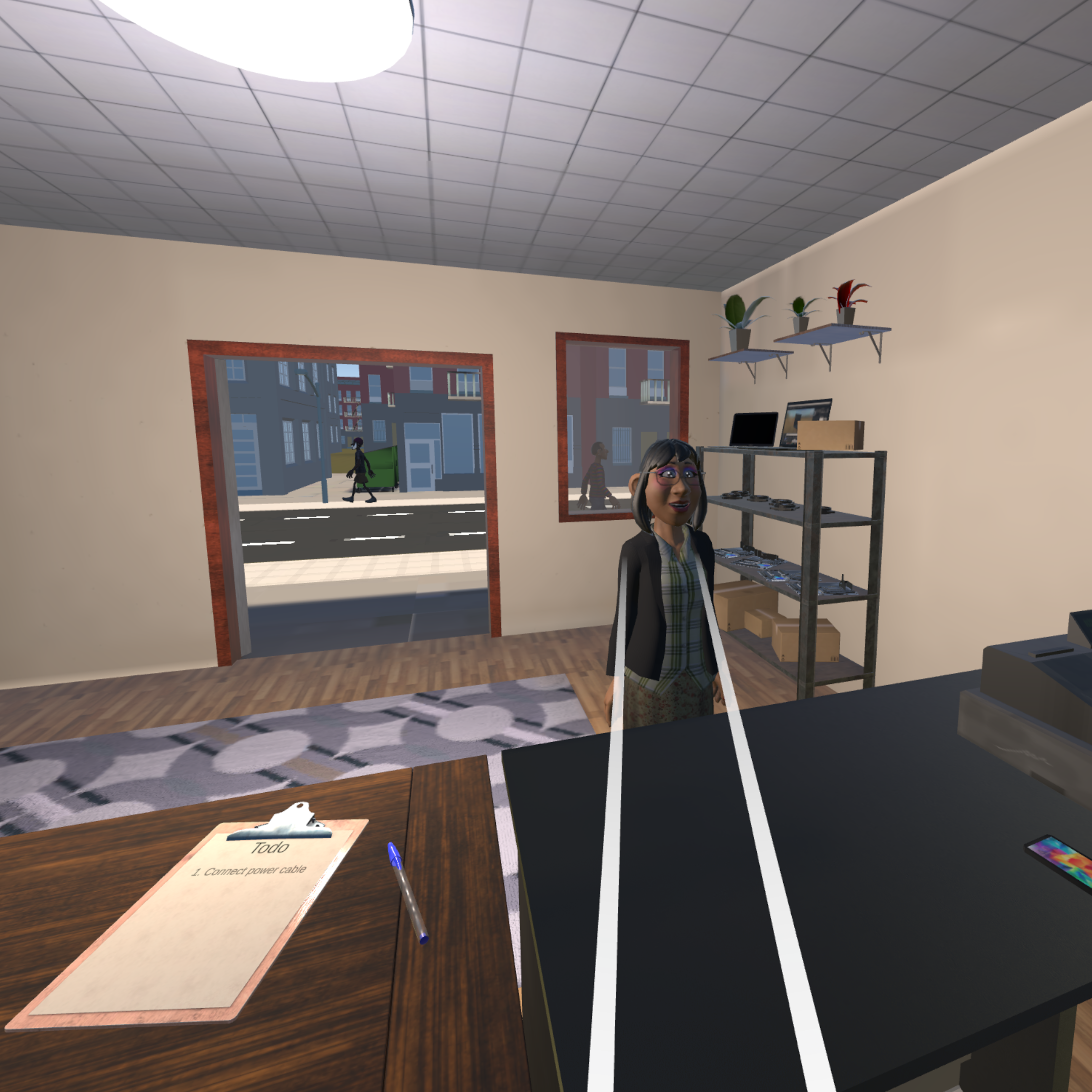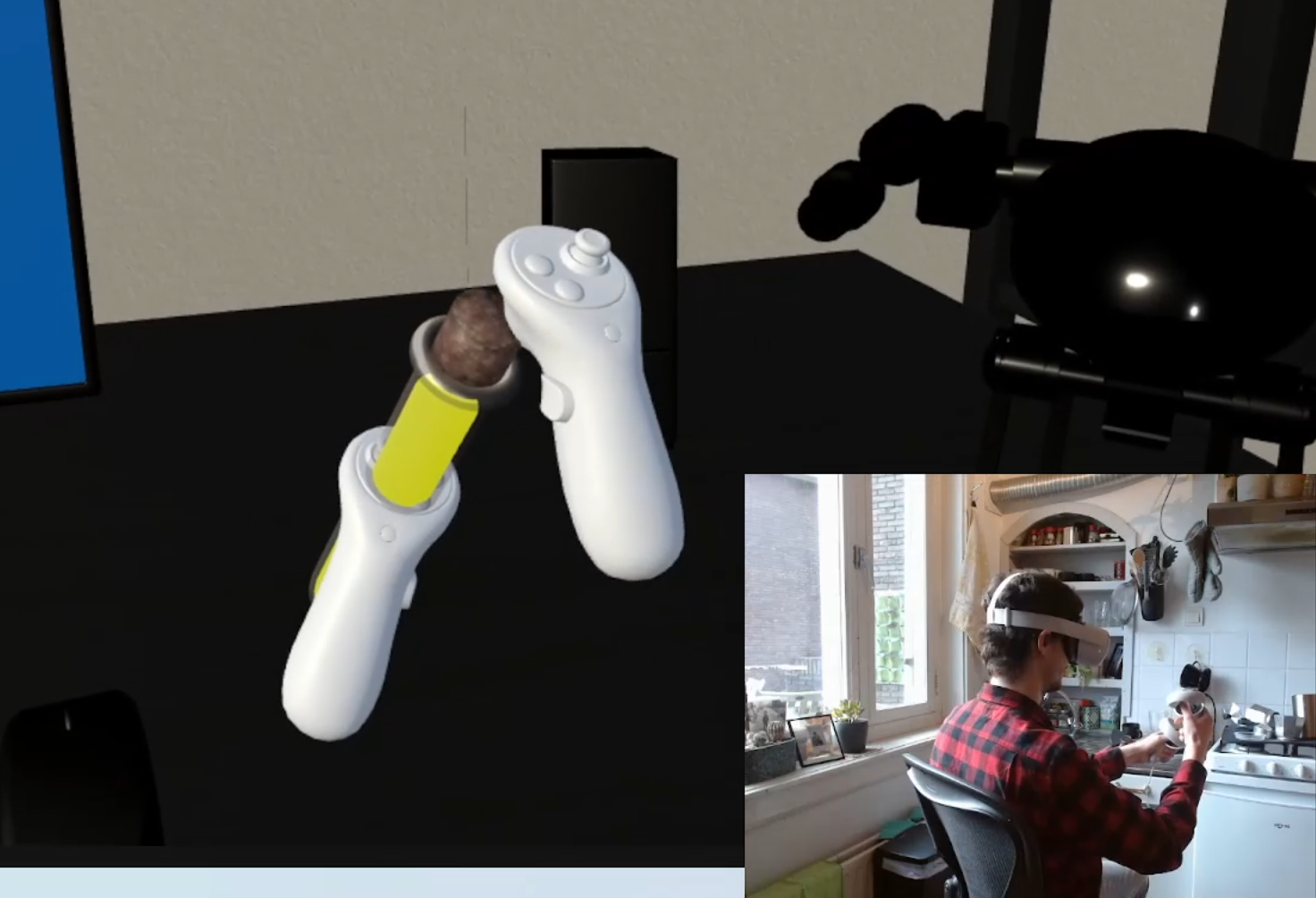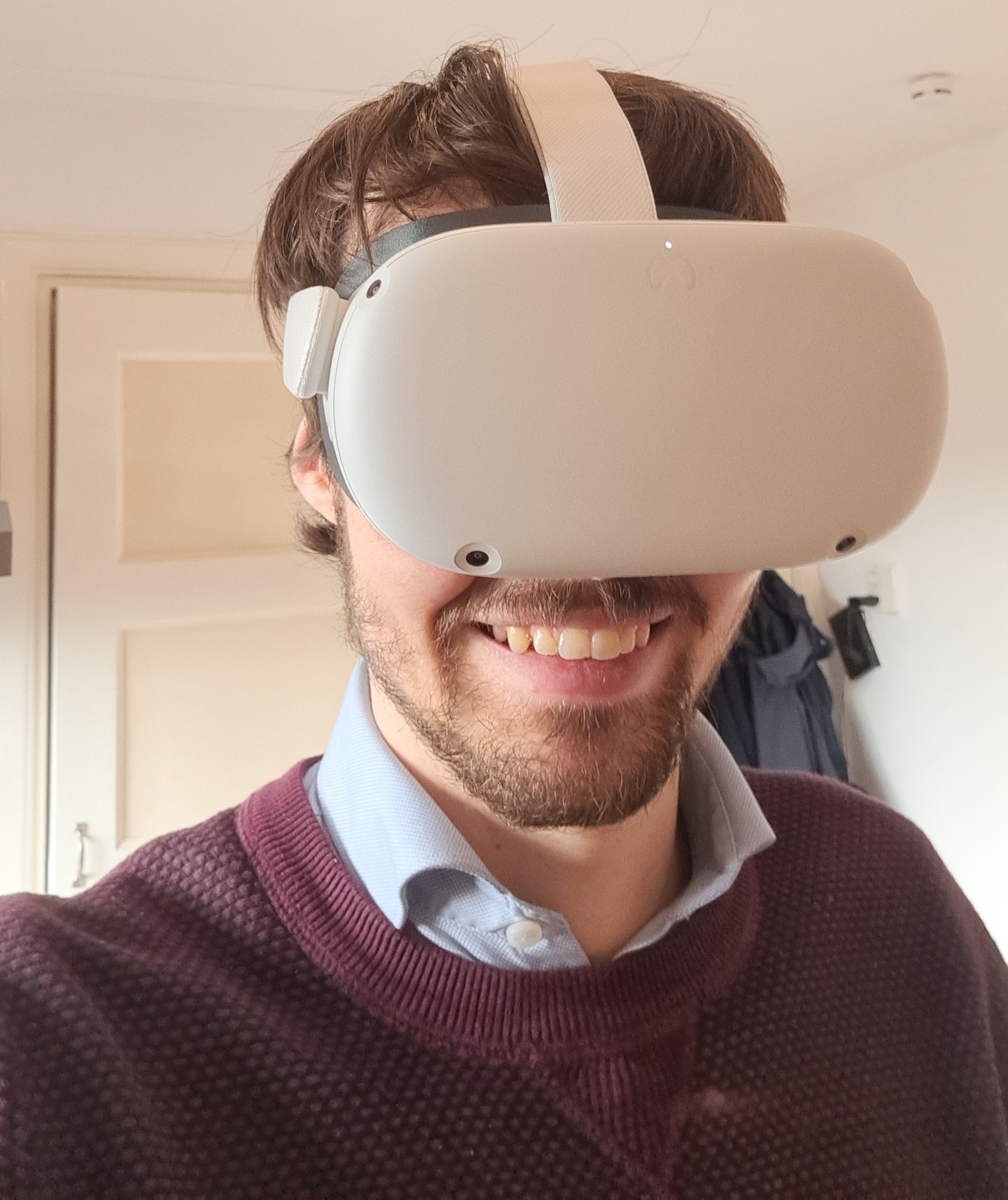technology and realization
In my FBP my previous knowledge and skills in making games and programming were very useful, as they allow me to quickly iterate and test prototypes of the concept. Furthermore, it made it easier to search, read and use information for things I didn’t know, because I knew how to search and how to take in the information from previous experiences. This was certainly the case for VR which I didn’t have any experience in, but through documentation and my existing knowledge I was able to get a VR demo up and running in a couple of weeks.
Next to learning how to make a VR game, I learned about all the different things that come into play when creating a game such as models, music, the map, dialogue, game logic, and interior. Now I can create a terrain, use models from online, incorporate sound, and script a complex behavior into a game.
